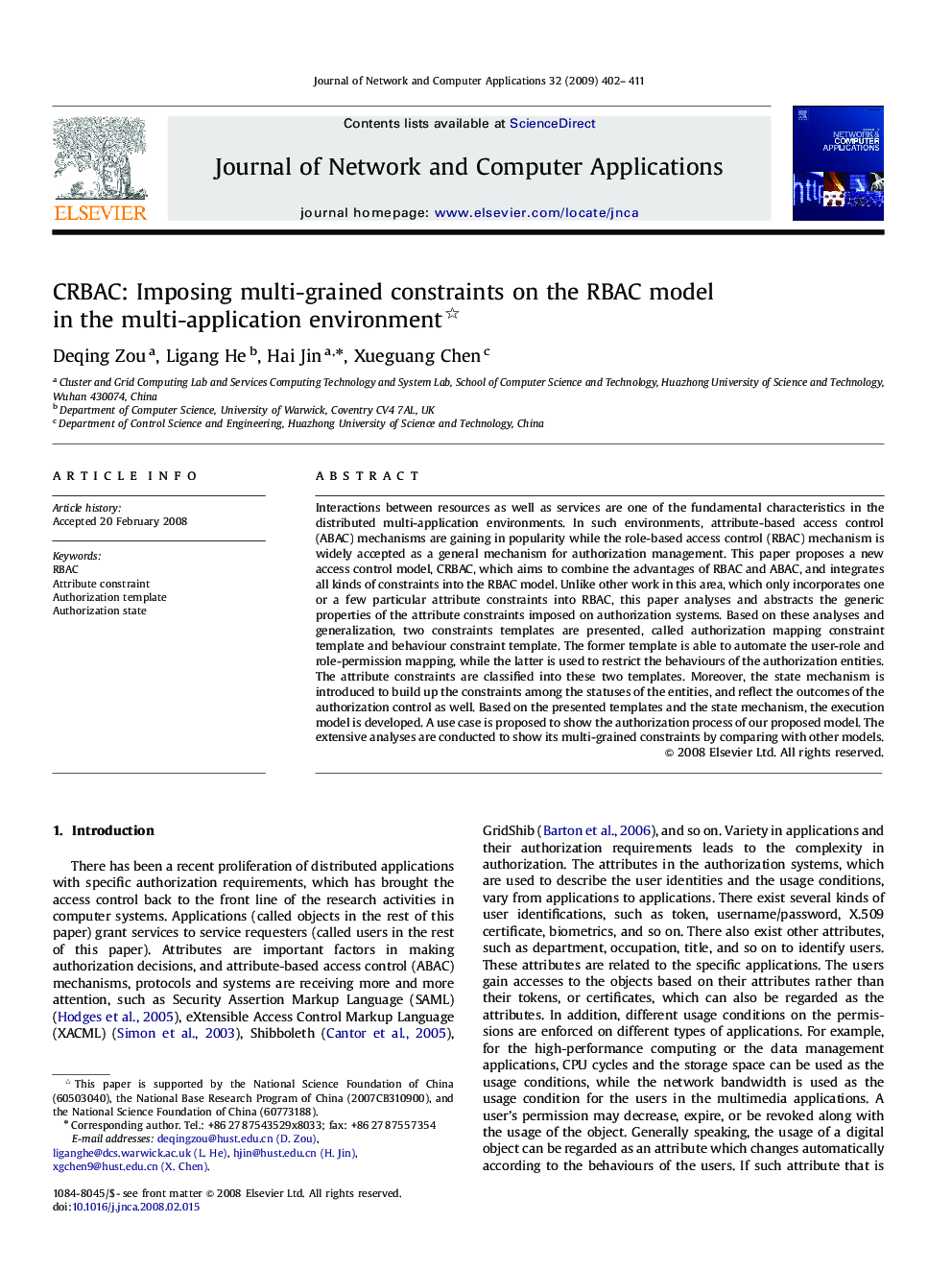| Article ID | Journal | Published Year | Pages | File Type |
|---|---|---|---|---|
| 460207 | Journal of Network and Computer Applications | 2009 | 10 Pages |
Interactions between resources as well as services are one of the fundamental characteristics in the distributed multi-application environments. In such environments, attribute-based access control (ABAC) mechanisms are gaining in popularity while the role-based access control (RBAC) mechanism is widely accepted as a general mechanism for authorization management. This paper proposes a new access control model, CRBAC, which aims to combine the advantages of RBAC and ABAC, and integrates all kinds of constraints into the RBAC model. Unlike other work in this area, which only incorporates one or a few particular attribute constraints into RBAC, this paper analyses and abstracts the generic properties of the attribute constraints imposed on authorization systems. Based on these analyses and generalization, two constraints templates are presented, called authorization mapping constraint template and behaviour constraint template. The former template is able to automate the user-role and role-permission mapping, while the latter is used to restrict the behaviours of the authorization entities. The attribute constraints are classified into these two templates. Moreover, the state mechanism is introduced to build up the constraints among the statuses of the entities, and reflect the outcomes of the authorization control as well. Based on the presented templates and the state mechanism, the execution model is developed. A use case is proposed to show the authorization process of our proposed model. The extensive analyses are conducted to show its multi-grained constraints by comparing with other models.
